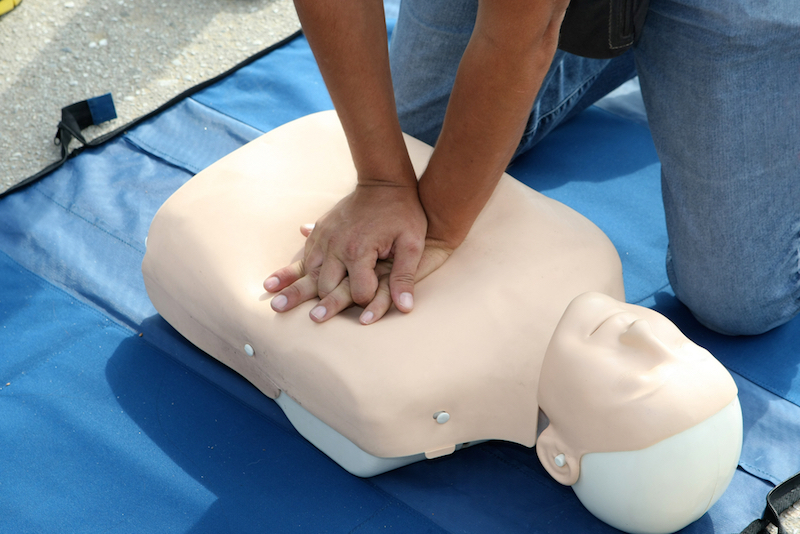CPR Mobile App System Sends Trained Adults to Rescue

When a person's heart suddenly stops beating, CPR can sometimes save that person's life. But if someone goes into cardiac arrest on the street, CPR might not be an option if no one nearby knows how to do it.
Now, researchers hoping to fix this problem have developed a mobile app that alerts people who are trained in CPR when someone nearby needs their help. In a new study, the researchers report that the app did indeed increase the rates of CPR performed on people undergoing cardiac arrest by 14 percentage points, according to the study.
In the study, about 9,800 adults in Stockholm who were already trained in CPR provided their cell phone numbers and agreed to be on call to assist people nearby who were experiencing a cardiac arrest. If anyone called the country's emergency number and reported a suspected cardiac arrest, a mobile alert system was ready to be activated that would connect these volunteers with the people in need of help.
During the study, there were 306 events in which a possible cardiac arrest was called in, and the system alerted those CPR-trained volunteers who were within 500 meters of the patient, via automatic voice calls and text messages. The volunteers were told the location of the person in trouble, and they also received Web links that showed the patient's location.
In order to determine whether the system was effective, the researchers also looked at what happened in 361 other events, when a possible cardiac arrest was called in but the volunteers were not alerted. (In those cases, it was still possible that the person in trouble could receive CPR from another, nearby bystander who happened to know how to perform it.) The study was randomized — meaning the calls that came in were randomly assigned to either contact the volunteers, or not — and it was also blinded, so that neither the dispatchers nor the researchers who created the app knew whether the system was activated on a given call until the final analysis.
The researchers found that when the system was used to contact nearby volunteers, 62 percent of the patients received CPR from someone nearby, compared with 48 percent who received CPR when the volunteers were not contacted, according to the study published in the June 11 issue of the New England Journal of Medicine. [3 Facts About Heart Attacks]
The system did not have significant effects on the patients' survival rates, the researchers noted. To accurately assess the impact of the system on survival rates, the researchers said that they would have had to conduct the study using a much larger patient population.
Get the world’s most fascinating discoveries delivered straight to your inbox.
In a related study of 30,000 patients in Sweden, published today in the same issue of the New England Journal of Medicine, researchers found that the 10.5 percent of people who experienced cardiac arrest and received CPR from bystanders before an ambulance got to them lived for at least 30 days after their cardiac arrest. In contrast, only 4 percent of people who did not receive CPR from bystanders before the arrival of an ambulance lived for at least 30 days.
"We can honestly say that we know survival rates improve" when CPR is performed even before the arrival of an ambulance, said Rosemarie Ennis, an EMT and corporate director of community education and health at North Shore-LIJ Health System in Great Neck, New York.
Every minute that passes without CPR being performed, the chances of survival will decrease by 7 to 10 percent, said Ennis, who was not involved in either of the two studies.
The new research is also a reminder of how important it is to train people in hands-only CPR, she said. "We too did research, and we found there was not much difference if you were trained as a health care provider providing chest compressions and the breathing; we found it just as effective to do CPR chest compressions only," Ennis told Live Science.
Follow Agata Blaszczak-Boxe on Twitter. Follow Live Science @livescience, Facebook & Google+. Originally published on Live Science.


